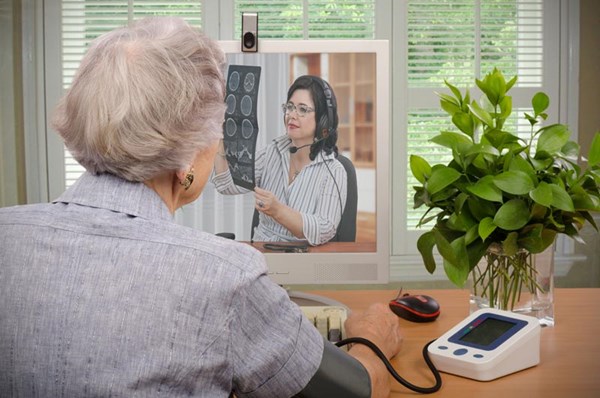In fact, a research report revealed that global telemedicine is estimated to reach US 86.7 billion in 2023, growing from just $21.1 billion in 2014. This gives some insight into how rapidly this market sector is evolving.
With the growing use of technologies, along with the increased sophistication of technology platforms, health providers worldwide are turning to telemedicine to provide patients with care. More importantly however, is that patients have become more active in their own treatment and recovery. They actively use technology to seek out health information and engage in social media activities that drive trends, and this has already positioned telemedicine playing catch up.
The scope of information sharing must somehow encompass a collective between medical practitioners, healthcare providers, and online industry leaders also. But, with its rapid expansion, keeping pace is proving a challenge across the board.
Where is telemedicine happening?
It's happening everywhere:
- Doctors are doing consults with patients by phone, email or webcam.
- Consultations are occurring digitally when split-second health decisions need to be made.
- Patients are using devices to relay blood pressure, heart rate, blood sugar, weight and other vital statistics.
- Hospitals are providing remote support to intensive care units and emergency rooms.
- Doctors are monitoring intensive care patients on continuous video monitors.
Right now, discussions about telemedicine are occurring globally.
For example, The American Medical Association has recently adopted ethical guidelines for physicians conducting telemedicine consults. Led by scientists from Romania, United States, Finland, the Republic of Moldova and Ukraine, a collaborative project is under discussion to establish a multinational system. Students in Rwanda are being taught how to conduct telemedicine as part of their medical training. Ghana actively uses telemedicine to plug its rural health care gaps.
Yes, telemedicine is currently a global phenomenon.
Benefits of telemedicine
With the growing rates of chronic disease and aging populations, the pressures and demands on healthcare resources could be greatly reduced through telemedicine health schemes.
Telehealth initiatives can cover clinical activities such as health care provision, telemonitoring of conditions, self-management reporting, and preventative health. For patients, there are many clinical benefits including improved access, closer care, improved outcomes, better quality of life, earlier detection of issues, and reduction of risk factors. For public health, there are real cost savings (estimated at 1.6 - 68.3% depending on service) and more sustainable solutions to be found.
Number of people using telemedicine
Melinda Beck, reports for the The Wall Street Journal that "more than 15 million Americans received some kind of medical care remotely last year, according to the American Telemedicine Association, a trade group, which expects those numbers to grow by 30% this year."
A collective of just three telehealth web companies in the US was estimated to conduct approximately 1.2 million virtual doctor consultations this year, patients most typically using it for minor conditions such as colds, flu, earaches and skin rashes.
So what about Australia?
According to an Australian Medicare report:
"As at end of March 2014, the Department of Human Services had processed over 169,000 telehealth services provided to over 62,000 patients by over 9,700 practitioners."
However, Australian telemedicine is still very much limited, and perhaps even way behind the times. Since 2011, Medicare has had a specialist video consultation introduced into their scheme but it only accounts for people in certain geographic areas, termed their ‘Remoteness Area System.'
This presents a major barrier to most people that Medicare will have to overcome moving forward. The United States has made leaps and bounds in the past three year, and as of January 2016, most states allow consultation and prescription via the telemedicine model. And the US Centers for Medicare and Medicaid has already approved reimbursement for many telemedicine services, most of the providers able to bill as usual.
Challenges of telemedicine
Without a doubt, the medical and health professions are currently facing challenges.
Challenges include, but are not limited to:
- Policy, policy, policy
- Medicare issues with rebating "online" services
- Medical and health bodies distributing effective best practice guidelines to encourage reliable assessment and quality
- Focus on core groups who may need it first - aged care, disabled, remote areas
- Access to suitable technologies
- Technologies providing a means of measuring effectiveness and return on investment
- Analysis of how to structure services to provide operational homogeneity
- Health insurance providers will need to enable coverage, like several US companies have - Anthem, Aetna, UnitedHealth Group and Blue Cross/ Blue Shield.
Though there are challenges, it's also an exciting time, one filled with the opportunity to implement a more effective health care model for all involved.




